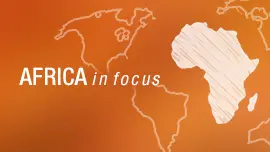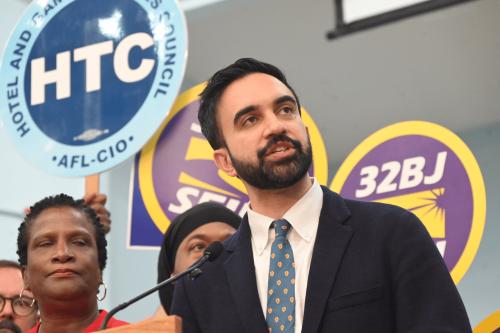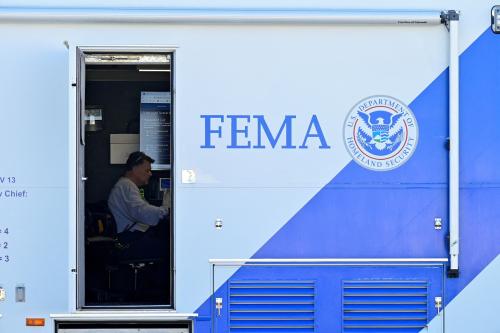Until the release of the Hollywood blockbuster “Captain Phillips,” with Tom Hanks at the helm and grossing more than $100 million at the box office so far, Somali pirates were slowly sinking into oblivion while their West African counterparts were making headlines. If Somali piracy is at a seven-year low, the Gulf of Guinea has become the new “epicenter” of piracy. As recently as last week, two American sailors were captured by pirates off the coast of Nigeria.
While it is tempting to put all pirates in the same boat, the root causes of piracy in the Gulf of Aden and piracy in the Gulf of Guinea are very different. To tackle piracy in Somalia or in West Africa, different policy responses must therefore be adopted. Here is why:
In April of this year, the World Bank launched our report, “The Pirates of Somalia: Ending the Threat, Rebuilding a Nation,” in Mogadishu with the Somali government. Our analysis of the business model of Somali piracy led us to conclude that the solution to piracy on the high seas off the coast of Somalia needed to be found onshore rather than offshore. “Sustained solution to ending piracy will only come with the recreation of a viable Somali state that can deliver essential services throughout the entire country to reduce poverty and create economic opportunities,” we argue. What led us to this conclusion? The fact that Somali pirates were able to anchor their hijacked vessels along the Somali shoreline and keep the crew in plain sight for as long as three years. Clearly, local power brokers (clan elders, religious leaders, regional government officials, businessmen, etc.) condoned that illicit business, thanks either to financial inducements or coercion by the pirates. We estimated that commanders and instigators in the Somali piracy business split 70 to 86 percent of piracy with these stakeholders. Changing the incentives of the enablers could therefore lead to the long-term eradication of piracy off the coast of Somalia.
The business model of West African piracy is very different. Pirates loot ships but are not interested in seizing the vessels. Their strategy is to buy enough time (in 2012, crews were held for four days on average) to offload products which would be sold on secondary black markets. In order to do this, they use a variety of short-term obfuscation measures such as repainting vessel funnels, destroying communications equipment, and obscuring the vessel’s name and IMO number—its license plate.
Somali pirates, on the other hand, are only interested in “reselling” the vessel, its cargo and its crew to the shipping company in exchange of a ransom. Their ability to do so completely stems from their implicit control of coastal areas where supply lines (food, energy, water) to the hijacked boat can transit. The collapse of the Somali central government following the civil war gave them control of coastal areas.
In contrast, West African central governments, particularly Nigeria, still have control of their coastal territories. Vessel and hostage storage can’t take place in plain sight; and they certainly cannot last for months. In that respect, piracy in the Gulf of Guinea resembles that in the Strait of Malacca or in the Caribbean: It emerges and thrives because of weak law enforcement rather than a lack of statehood.
Whether piracy in the Gulf of Guinea will remain a menace depends on how onboard security measures and law enforcement both on land and at sea will be able to contain an increasingly sophisticated threat. Meanwhile, there are reasons to be concerned by the potential nexus between profit-motivated pirates and politically motivated militants in the Niger delta (and so much more than in the Horn of Africa). Indeed, a reliable network of hideaways is of greater value to militants than the ability to hold ships and crews hostage for months and in plain sight. Pirates and militants might therefore find it mutually beneficial to trade hostages when some have greater political rather than monetary value or vice-and-versa. They might even cooperate when hostages have both high political and monetary value. As recently as last week, the Associated Press reported that rebels from the Movement for Emancipation of the Niger Delta (MEND) had been contacted by the kidnappers of the two American sailors captured off the coast off Nigeria.
Like the Gulf of Aden, the Gulf of Guinea is a crucial transit area for international trade. Like the Gulf of Aden, the Gulf of Guinea is bordered by some fragile states. However, while the relationship between al-Shabab and Somali pirates is tumultuous, militants and pirates operating in the Gulf of Guinea could obtain large gains if they were to cooperate, which would further imperil crew members that sail through the pirate-infested waters.
Quy-Toan Do is the lead author of Word Bank’s 2013 report “The Pirates of Somalia: Ending the Threat, Rebuilding a Nation.” He is a senior economist in the research department of the World Bank.
Farley Mesko is the chief operating officer of C4ADS, a nonprofit conflict and security research group. He also works as a freelance journalist and sits on the board of directors of a Somali NGO. He is a co-author of the 2013 World Bank report “The Pirates of Somalia: Ending the Threat, Rebuilding a Nation.”
The Brookings Institution is committed to quality, independence, and impact.
We are supported by a diverse array of funders. In line with our values and policies, each Brookings publication represents the sole views of its author(s).




Commentary
The Gulf of Aden and the Gulf of Guinea: A Tale of Two Piracies
November 5, 2013